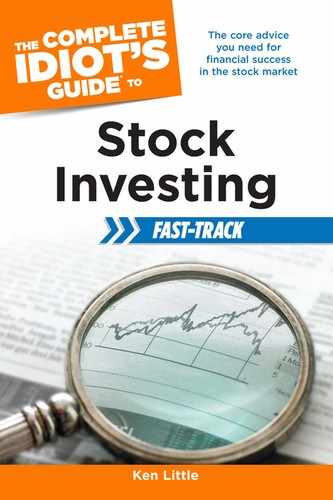0%
73Chapters
0-1Hours read
0kTotal Words
Book Description
The Complete Idiot's Guide® to Stock Investing Fast-Track gives readers exactly what they need to know in order to confidently invest in stocks on their own. Readers won't get bogged down with non-essential information, but will instead learn the critical fundamentals for picking and valuing stocks and intelligently managing a portfolio for long-term success. Readers learn how to evaluate various classes of stocks, how to improve their chances of success based on their personal level of risk, how to make a purchase, when to invest, and how to minimize their risk along the way. Many investing books give readers a lot of non-essential information; The Complete Idiot's Guide® to Stock Investing Fast-Track gives readers nothing but the essentials so they can get moving and start investing right away.Table of Contents
- Cover
- Title Page
- Copyright
- Dedication
- Contents
- Introduction
- 1 The Basics
- 2 Establishing a Plan
- 3 Finding and Understanding Information
- 4 Financial Statements
- 5 Types of Stocks
- 6 Stock Price vs. Stock Value
- No Clear Answers on Stock Prices
- How Daily Stock Prices Are Set
- Price and Value Are Not the Same
- Intrinsic Value Determines Potential Success
- Analyzing a Company’s Economic Moat
- The Next Step: Analyzing the Business
- Using Ratios in Analysis
- Intrinsic Value Using Discounted Cash Flows
- Alternative to Discounted Cash Flow Method
- 7 When to Buy or Sell
- 8 Building a Portfolio
- 9 Getting Started with a Stockbroker
- 10 Mistakes to Avoid and Tools to Use
- Index
- About the Author
